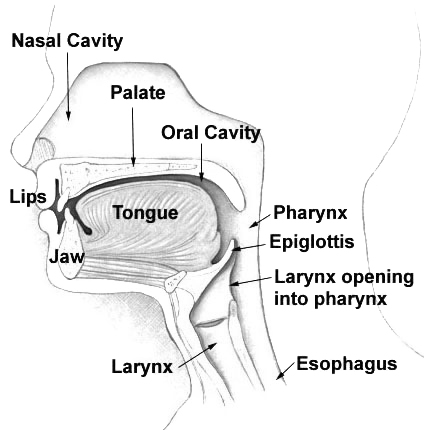
The basics of human speech are more complex than one might imagine. Although simple speech sounds can be attributed to natural sources (such as stomach growls or a guitar wah-wah pedal), longer vocal phrases cannot be so easily be created naturally.
In the process of creating the ER70 (and analyzing the device which served as its inspiration), I did a fair amount of research on the subject of speech physiology (how human speech is produced).
The figure above identifies all of the anatomical parts which shape sounds into what we perceive as speech.
Not Just The Vocal Chords
Most are familiar with the role our vocal chords contribute to the process, but these are but one source.
Every element identified in the figure above works together to produce the phonemes which comprise speech. The subtlest anatomical differences contribute our own individual voice prints.
Formants
I fear I will lose my audience if I go too deep into this subject, but basically all of the anatomical parts work together to create complex sounds which are comprised of formants.
This is all part of what is called the source-filter model of human speech production whereby simple sounds are produced by the vocal chords and the vocal tract which are subsequently filtered by the throat, nasal cavity, tongue, teeth, and lips to produce more complex sounds.
The Takeaway
In an effort to discredit EVPs, skeptics sometimes go to great lengths to assign simple, natural explanations to what is in fact complex. The idea of, for instance, the wind blowing in such a way that it creates complex vocal phrases is far from a convincing natural explanation, to me at least, and I’d urge you to remain skeptical of such simplistic explanations.